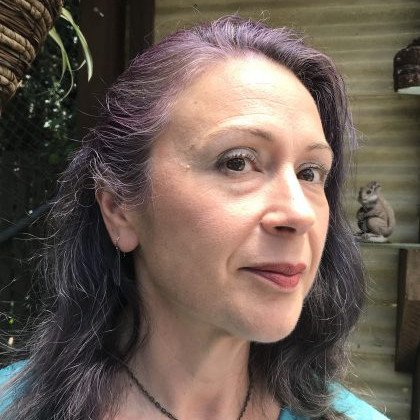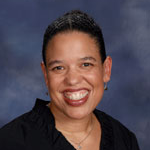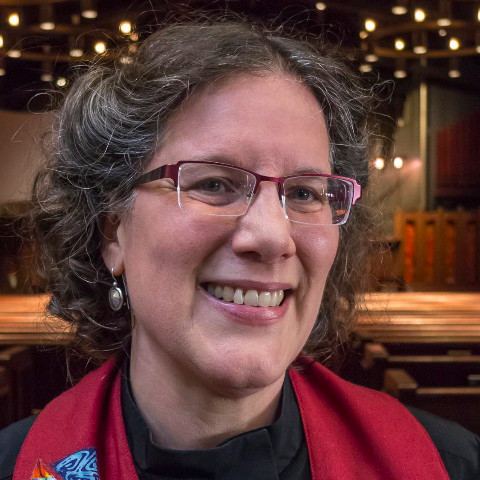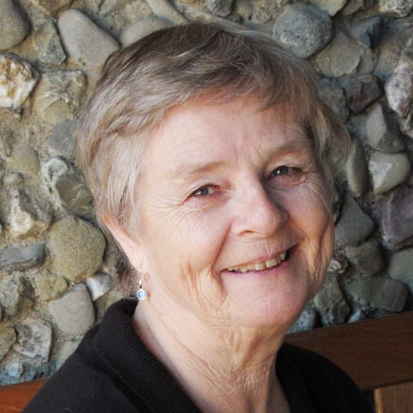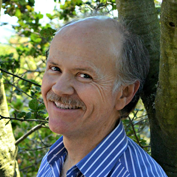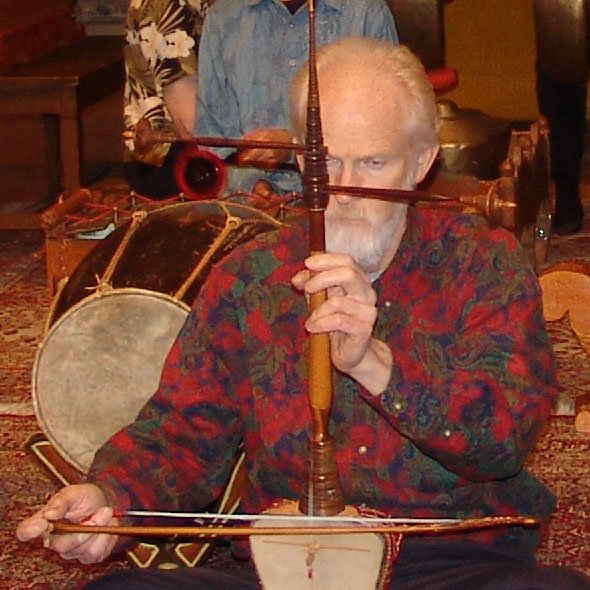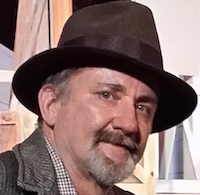Between melting and freezing,” says T. S. Eliot in his Four Quartets, “ the soul’s sap quivers.” The “dumb spirit” “stirs.” “This is the spring time / But not in time’s covenant.”
What does it mean to be “between melting and freezing”? I’ve thought about it a lot since this phrase from “Little Gidding,” the fourth of Eliot’s Quartets, spoke to me for the first time after many previous readings in which it went unnoticed. On that particular reading it seemed to capture something of my recent life experience, both affectively and cognitively, a feeling tone as well as a way of understanding it (although now, for the life of me, I can’t quite get back to the instantaneous quick of that connection–between me and melting and freezing. What was I thinking of?)
One thing seems clear: it is an in-between state, or condition–a time when things are neither frozen solid not completely liquid. And being in-between is a time of transition, a time of flow rather than stasis. In fact, you might argue that between melting and freezing is the most between of betweens, because Eliot has chosen to use the gerund, or present participial, form of the verbs. These verbs are already in flow. So, it is a time, or state, or condition, of flow between two times, or states, or conditions of flow. Not between frozen and melted, but between freezing and melting. Could it be that Eliot is pointing to that very moment, that instant, when melting shifts over into freezing or freezing into melting? A moment elusive, as Anne Sexton would say in The Awful Rowing Toward God, as the moment “when an awful headache goes away.”
At the close of the same section of the same Quartet, Eliot tells us that here “is the intersection of the timeless moment”; “here,” he continues, “and nowhere. Never and always.” And in another place in the Quartets, he talks about “The point of intersection of the timeless / With time.” I think Eliot might be saying that the between is the intersection, that the moment between melting and freezing is the point of intersection of the timeless with time, that being in-between (could be any in-between, any moment of flow, or transition) is being at the point of intersection.
I’m still trying to get back to the instantaneous quick of the connection between melting and freezing and me. Let me take it from a more personal angle (I almost typed “angel”). Some years ago I had a conversation with an adult student that stays in my memory as a turning point for me. She had had to be absent from class because of some pretty serious difficulties with her college-aged son. You can imagine them—drugs, alcohol. In addition, she was working full-time and going to school three nights a week–and, she had to turn in her final paper for me. She was in a time of crisis. It was one thing after another. I shared with her some of my own reflections, since that year had been a difficult year for me too–my mother had died suddenly, I was worried about my father being alone after sixty years and so far away, and then my long-term cat was diagnosed with a possibly malignant tumor (It turned out to be benign, to my relief). I had had to miss class unexpectedly too. The reflection I shared with her was a moment of awakening for me. It went something like this.
For a long time I have longed for an extended space, an expanse of time, in which there would be nothing to worry about, everything would be all right, and I would be able to enjoy life, do things I really want to do, write write write poetry. I was telling a friend who recently turned 70 that I feel like I am surrounded by old and dying creatures and I am responsible for them. He replied, “And you know, Jeanne, it only gets worse as you get older.” Shortly after that it suddenly occurred to me that there would never be that extended, expansive respite, that moment of rest, I so longed for. There would always be something to worry about. If enjoying life and writing poetry depended on that, I might as well forget both. I think I was on my way home from the vet and thinking about the lab report I would get the following day. It would be my custom to worry about it all day and over night. Then, it came to me (something you have probably known all along; I’m a slow learner) that I might get that expanse of time I so long for some day–if so it will be an extraordinary gift–but what I have now are brief respites–for instance, this time between vet visit and lab report–if I can just free myself up from worry and appreciate them. These brief respites could be quite restorative.
So my reflection went. And my student, with a remarkable amount of good nature and courage (she’d been through a lot), said: “Yea, I know. My pastor says you’re either coming out of a crisis, going into a crisis, or in a crisis.” That’s my second text. “Either coming out of a crisis, going into a crisis, or in a crisis.” Yes, I thought intuitively, that’s like being between melting and freezing all the time. The pastor knows, and so does my student, that we won’t get that longed for, long-term period of rest and renewal. All there is are these short intervals suspended between pole and tropic, melting and freezing, waking and sleeping, here and nowhere, never and always. We live in the between: in these moments of intersection.
Bay area psychotherapist and Zen master, John Terrant, writes: “this is not because there is some malign energy in the universe. It is more a rule of nature: darkness follows light and is followed by light….[It is well] not to take success as an accouterment of the ego or to take failure as a personal wound from the universe” (The Light Inside the Darkness). The earth itself is between melting and freezing. Perhaps the melting and freezing in our own lives is like earth’s weather; it comes and it goes, having little or nothing to do with our egos and our ability to control.
I want to go back to Eliot’s intersection of the timeless with time. What can we make of that? What does it mean? It might mean that at any moment, an instant of time–in which we are weighed down by the matters of the world (the “dumb force of matter,” to use John Terrant’s phrase)–at any moment, an instant of time can break open into eternity, into a sense of timelessness, in which we are both ourselves and more than ourselves. We suddenly realize that we are part of the entire web of life, we are knit into it and stand in sheer appreciation of it. That moment is available at any place at any time–to T. S. Eliot, standing as he was in England, when in the middle of winter, there was a season of spring. “This is spring time,” he writes, “but not in time’s covenant”–a spring time not predicted by the calendar or the clock, our instruments of human control. A spring that is not malleable to the categories of human understanding. A blossoming of the cold.
“Between melting and freezing / The soul’s sap quivers.” It quivers before the unexpected recognition that it is possible to transcend the human condition, to be both in and out of time, to stand at the point of intersection of the timeless with time.
If you came this way,
Taking any route, starting from anywhere,
At any time or at any season,
It would always be the same: you would put off
Sense and notion. You are not here to verify,
Instruct yourself, or inform curiosity
Or carry report. You are here to kneel
Where prayer has been valid. And prayer is more
Than an order of words, the conscious occupation
Of the praying mind, or the sound of the voice praying.
And what the dead had no speech for, when living,
They can tell you, being dead: the communication
Of the dead is tongued with fire beyond the language of the living.
Here, the intersection of the timeless moment
Is England [here] and nowhere. Never and always.
It occurs to me that the quintessential experience of the intersection of the timeless with time is the moment of death–and that we get a glimpse of it when we are with a loved one as she, he dies. There was a program on death on the public television channel not long ago. A woman who was herself to die within three days, described her husband at the time of his death. He had the most “beatific expression,” she said. “All of the lines were erased from his face.” It reminded me of what my father said about my mother, when she died (it still seems very recent to me), with him on one side of her and me on the other. “She looks so beautiful, just the way she looked when I first met her.” The intersection of the timeless with time. He saw it then. I could not see it. I keep trying to see in my imagination what her face looked like when the timeless intersected time.
“Since there is nothing but just this moment,” the 13th century Zen master, Dogen, writes (And this is my last text), “the time-being is all the time there is…. Each moment is all being, is the entire world. Reflect now whether any being or any world is left out of the present moment” (Moon in a Dewdrop).
His understanding of time is not so different from that of Saint Augustine, who wrote in his Confessions that “neither future nor past actually exists…. [I]t would be more correct to say: there are three times, a present of things past, a present of things present, a present of things future.” It is customary, he continued, though not correct to speak of three times: past, present, and future. Zen master Dogen, in a similar mode, writes that it is customary for people to think the words “the time-being” mean “for a while.” For a while, for the time being, I plan to live alone, my father says. “Actually,” Dogen writes, “vigorously abiding in each moment is the time-being.
All things in the entire world are linked with one another as moments. The time-being has the quality of flowing. So-called today flows into tomorrow, today flows into yesterday, yesterday flows into today. And today flows into today, tomorrow flows into tomorrow.
It is remarkable how similar both of the foregoing quotations are to the opening lines from Four Quartets.
Time present and time past
Are both perhaps present in time future,
And time future contained in time past.
. . .
What might have been and what has been
Point to one end, which is always present.
So, for Dogen the time-being, which is all the time and all the being we have, is that flowing moment between, between melting and freezing, when the instant and the eternal are one. It is that moment of intersection of the dead with the living, the moment of being knit into the entire quivering web of life. A moment as elusive as that very moment when the lines grew smooth on my mother’s face. That’s why there is nothing to do but to “kneel where prayer has been valid,” to quote Eliot; or to stand in “sheer appreciation,” D. H. Lawrence would say. And the intersection of the timeless moment could be right here, where you are, or nowhere. It could be never and always, because it depends on your, my, ability to see it, to be aware of it, to vigorously abide in it, despite the dumb weight of matter and all of its attendant worries.
It is as my student’s pastor said: there is no extended time free from crisis. We’re always in it, going into it, or coming out. But even within crisis, there are moments of rest, peace, and renewal, respites in which the “soul’s sap quivers” and the “spirit stirs.” In those moments we experience ourselves as being utterly subject to the human condition—between crisis and crisis—
and at one and the same time, resting in the peace and renewal that transcends it.
***


